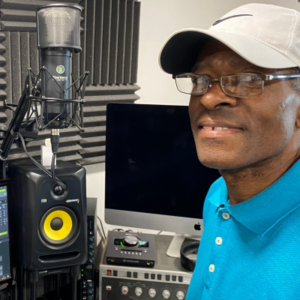Eddie “Bongo” Brown was born in Clarksdale, Mississippi, in 1932. He grew up in Memphis, where he learned to play a range of percussion instruments, including conga and bongo drums. He was attracted to the Latin rhythms of Cuban percussionist Chano Pozo, who played in Dizzy Gillespie’s Jazz band.

Brown came to Detroit to play in the clubs and bars, where he was spotted by Motown and offered a job in Studio A in the early days of the company. He went on to play on a significant percentage of the tracks recorded there over the next ten or so years. Earl Van Dyke is quoted as estimating the percentage at around 97% (AllMusic). Brown didn’t read music but he had a sense of rhythm that enabled him to bring spirit and verve to the Motown sound. Brown’s first official credits at Motown came in 1971 on albums by The Undisputed Truth, Valerie Simpson and The Temptations, but he had played on hundreds of songs before that, contributing a significant element of Motown’s typical dance rhythms.
When Berry Gordy moved Motown to Los Angeles from 1972, Brown went too. Some of his most memorable playing can be heard on Marvin Gaye’s 1971 album “What’s Going On”, but there are many other notable contributions to other Motown artists. The move to Los Angeles also brought greater freedom, enabling Brown to play with artists on other labels, such as Candi Staton (“Young Hearts Run Free” 1976), Marlena Shaw (“Sweet Beginnings” 1977), Deniece Williams (“When Love Comes Calling” 1978), Peabo Bryson and Natalie Cole (“We’re the Best of Friends” 1979) and Randy Crawford (“Now We May Begin” 1980). He died in California in 1984, aged fifty-two.
Corey Jahns also played bongos at Motown from 1959 to 1967.
Motown had two vibraphone players during the formative years, James Gittens and David Hamilton. Both men were actually multi-instrumentalists.
James Gittens played vibraphone and keyboards on some of the early Tamla singles, including Marvin Gaye’s recordings from 1961. He played on sessions in Studio A up to 1967, but the arrival of Jack Ashford and Jack Brockensha probably limited his opportunities during the latter half of his time at Motown.
Dave Hamilton played guitar and vibraphone. He moved to Detroit as a child from his birth-place Savannah, Georgia, and joined a number of local groups, also becoming a session musician.
His contact with Berry Gordy started in 1957, when he played on two Jackie Wilson singles that Berry Gordy had co-written, “Reet Petite” in 1957 and “Lonely Teardrops” in 1958. He played in Studio A in the early days, playing guitar on “Please Mr. Postman” for the Marvelettes in 1961. Later, he played guitar on the recording of Marvin Gaye’s “Stubborn Kind of Fellow” in 1962. He played vibraphone on Mary Wells’ “My Guy” in 1964.

Hamilton’s musical background was in the field of Jazz and Blues, which resulted in his recording “Blue Vibrations” (with Clarence Paul producing) on Motown’s Workshop Jazz label in 1963.

Dave Hamilton’s “Detroit Dancers” compilation on the Kent Soul label
Album Cover image courtesy of Ace Records UK.
Hamilton left Motown soon after and set up a recording studio with Darrell Goolsby, as well as forming two record labels, Tempo and Topper. He later added three more imprints, New Day, TCB and Demo Ristic to his collection. Hamilton recorded a great deal of work at the studio, including Gospel songs and Soul/Funk dance tunes, which were acquired by Ace Records UK shortly after his death in 1994. The company has since released a series of albums showcasing Hamilton’s work.
Header Photo: Tpvibes (Wikimedia Commons)
















